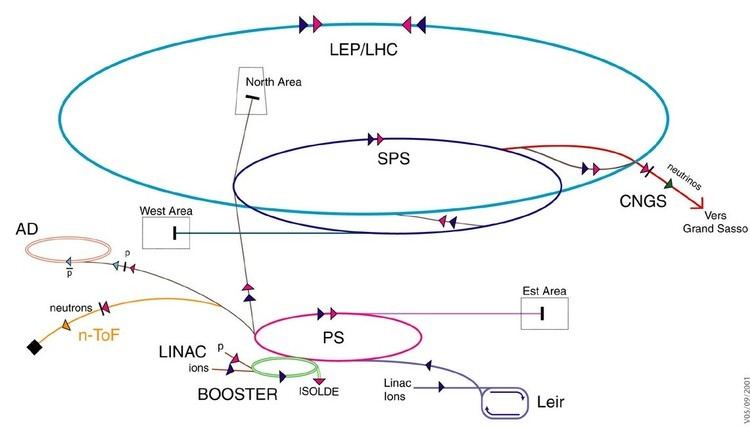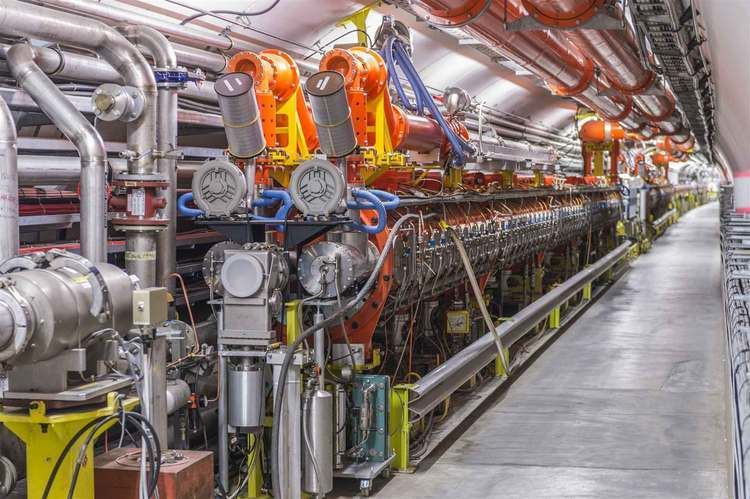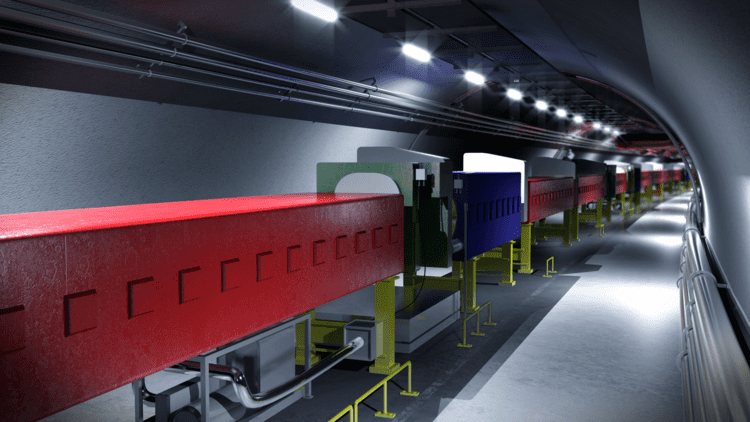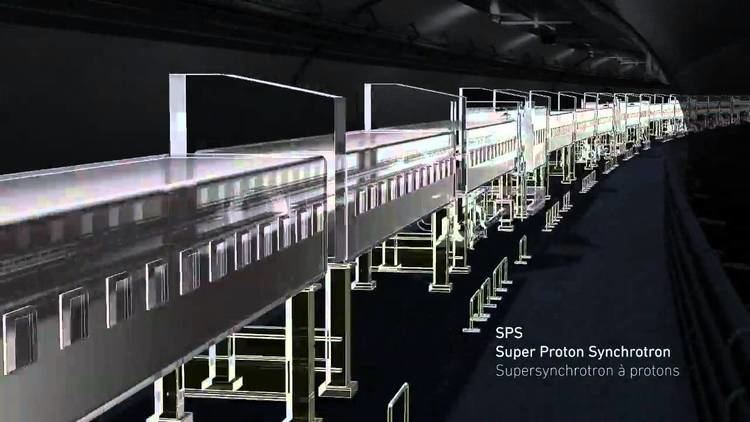ISABELLE BNL, cancelled in 1983 Relativistic Heavy Ion Collider BNL, 2000–present | Superconducting Super Collider Cancelled in 1993 | |
 | ||
06 cern control centre sps super proton synchrotron outline
The Super Proton Synchrotron (SPS) is a particle accelerator of the synchrotron type at CERN. It is housed in a circular tunnel, 6.9 kilometres (4.3 mi) in circumference, straddling the border of France and Switzerland near Geneva, Switzerland.
Contents
- 06 cern control centre sps super proton synchrotron outline
- Erik seifert sps super proton synchrotron
- History
- Current operations
- Major discoveries
- Upgrade for High Luminosity LHC
- References

Erik seifert sps super proton synchrotron
History

The SPS was designed by a team led by John Adams, director-general of what was then known as Laboratory II. Originally specified as a 300 GeV accelerator, the SPS was actually built to be capable of 400 GeV, an operating energy it achieved on the official commissioning date of 17 June 1976. However, by that time, this energy had been exceeded by Fermilab, which reached an energy of 500 GeV on 14 May of that year.

The SPS has been used to accelerate protons and antiprotons, electrons and positrons (for use as the injector for the Large Electron–Positron Collider (LEP)), and heavy ions.

From 1981 to 1984, the SPS operated as a hadron (more precisely, proton–antiproton) collider (as such it was called SppS), when its beams provided the data for the UA1 and UA2 experiments, which resulted in the discovery of the W and Z bosons. These discoveries and a new technique for cooling particles led to a Nobel Prize for Carlo Rubbia and Simon van der Meer in 1984.
Current operations
The SPS is now used as the final injector for high-intensity proton beams for the Large Hadron Collider (LHC), which began preliminary operation on 10 September 2008, for which it accelerates protons from 26 GeV to 450 GeV. The LHC itself then accelerates them to several teraelectronvolts (TeV).
Operation as injector still allows continuation of the ongoing fixed-target research program, where the SPS is used to provide 400 GeV proton beams for a number of active fixed-target experiments, notably COMPASS, NA61/SHINE and NA62. The SPS is also being used by the CNGS experiment to produce a neutrino stream to be detected at the Gran Sasso laboratory in Italy, 730 km from CERN.
The SPS has served as a test bench for new concepts in accelerator physics. In 1999 it served as an observatory for the electron cloud phenomenon. In 2003, SPS was the first machine where the Hamiltonian resonance driving terms were directly measured. And in 2004, experiments to cancel the detrimental effects of beam encounters (like those in the LHC) were carried out.
Major discoveries
Major scientific discoveries made by experiments that operated at the SPS include the following.
Upgrade for High Luminosity LHC
The Large Hadron Collider will require an upgrade to considerably increase its luminosity by the 2020s. This would require upgrades to the entire linac/pre-injector/injector chain, including the SPS. The SPS will need to be able to handle a much higher intensity beam. One improvement considered in the past was increasing the extraction energy to 1 TeV. However, the extraction energy will be kept at 450 GeV while other systems are upgraded. The acceleration system will be modified to handle the higher voltages needed to accelerate a higher intensity beam. The beam dumping system will also be upgraded so it can accept a higher intensity beam without sustaining significant damage.
